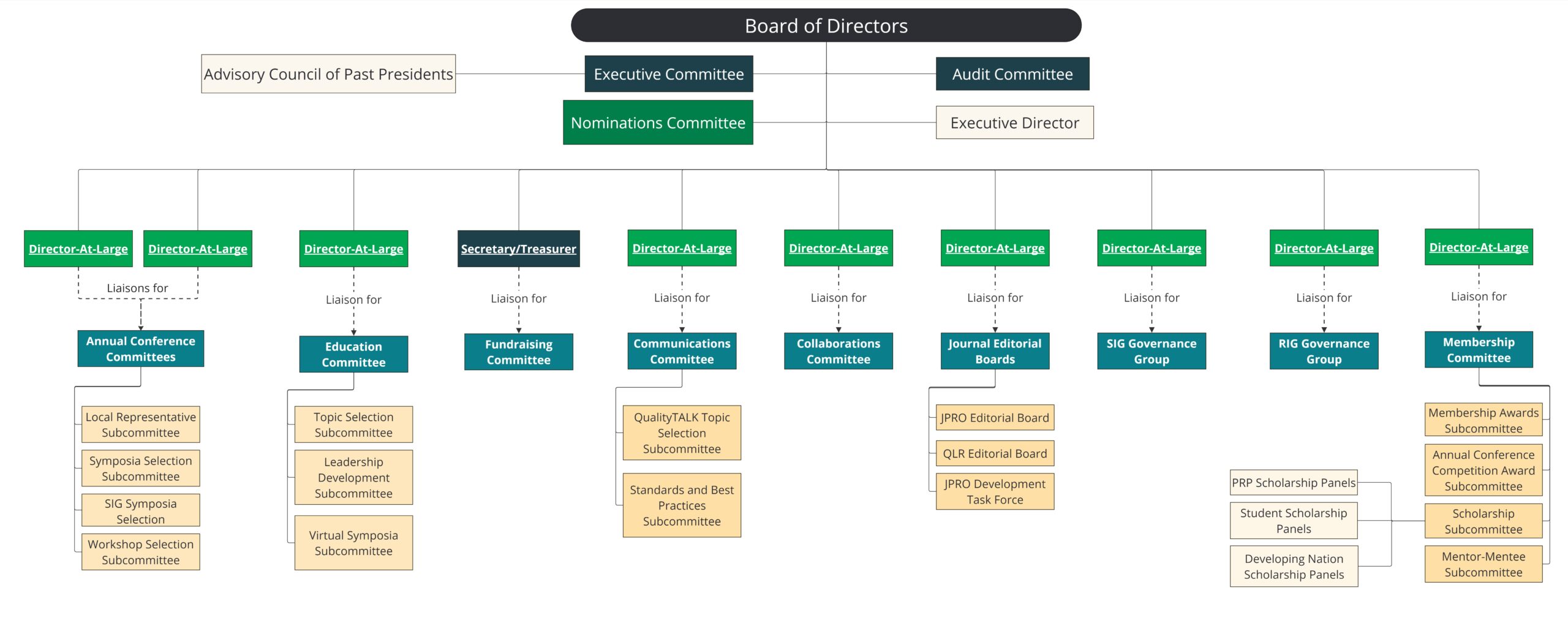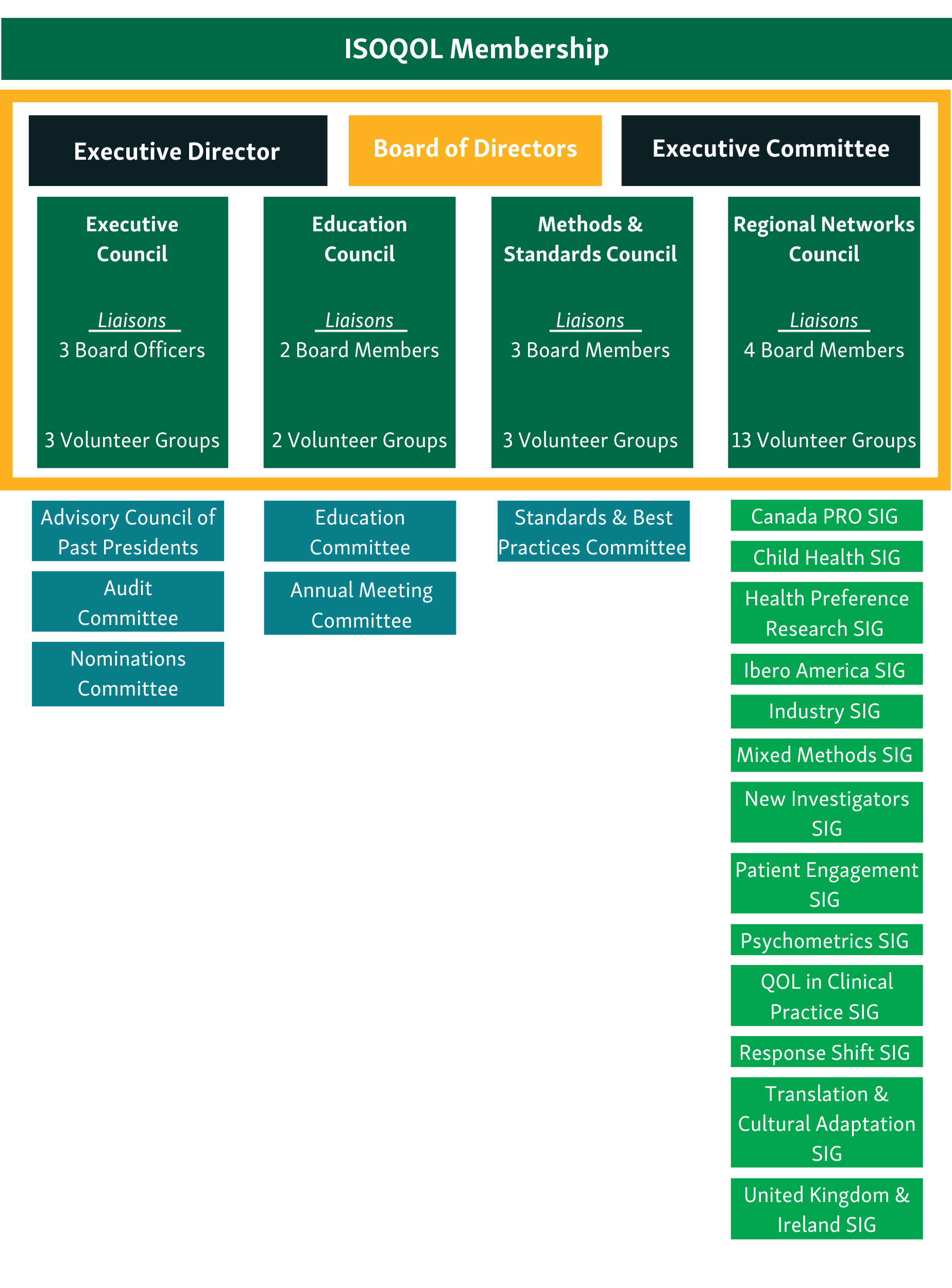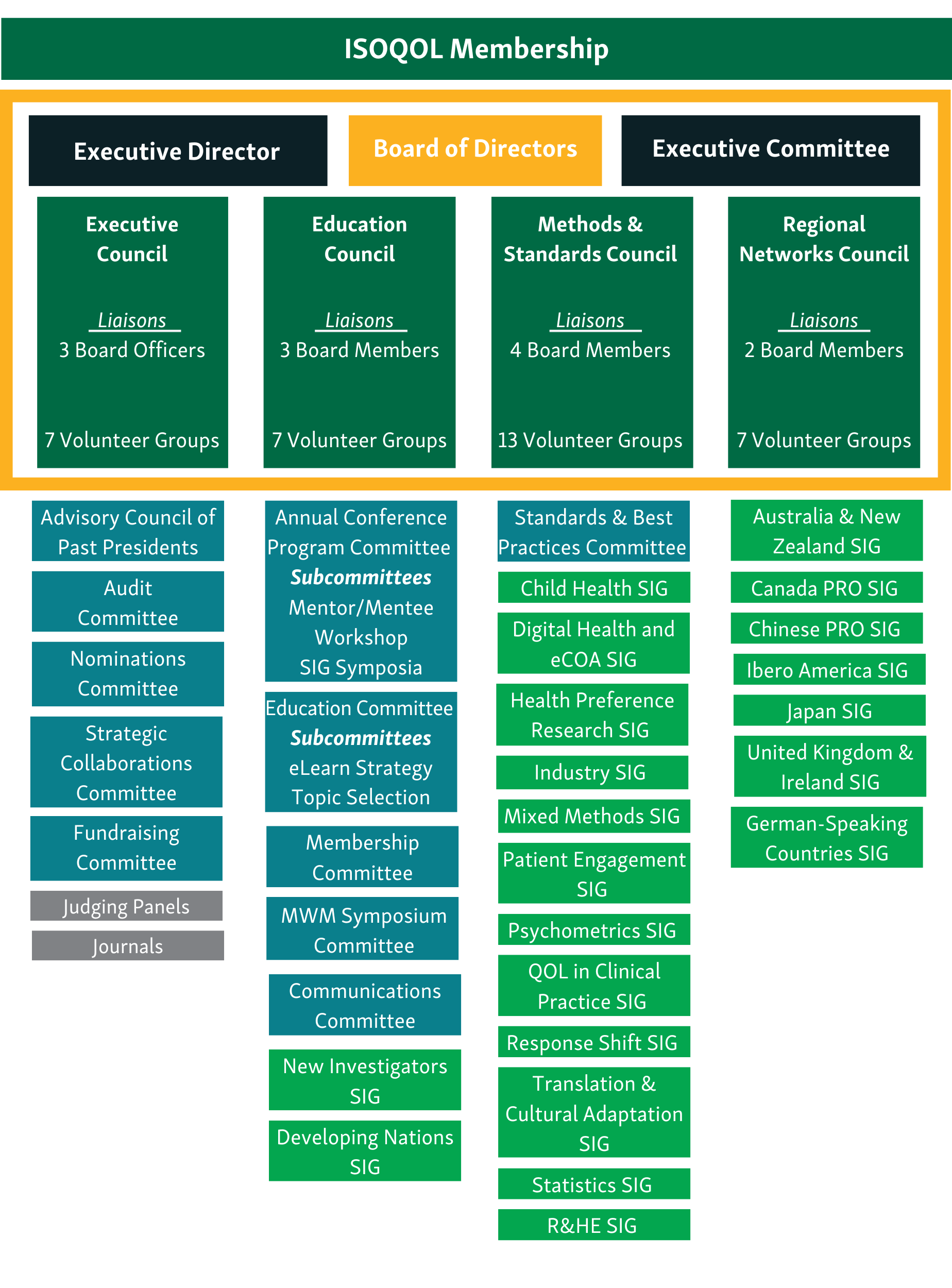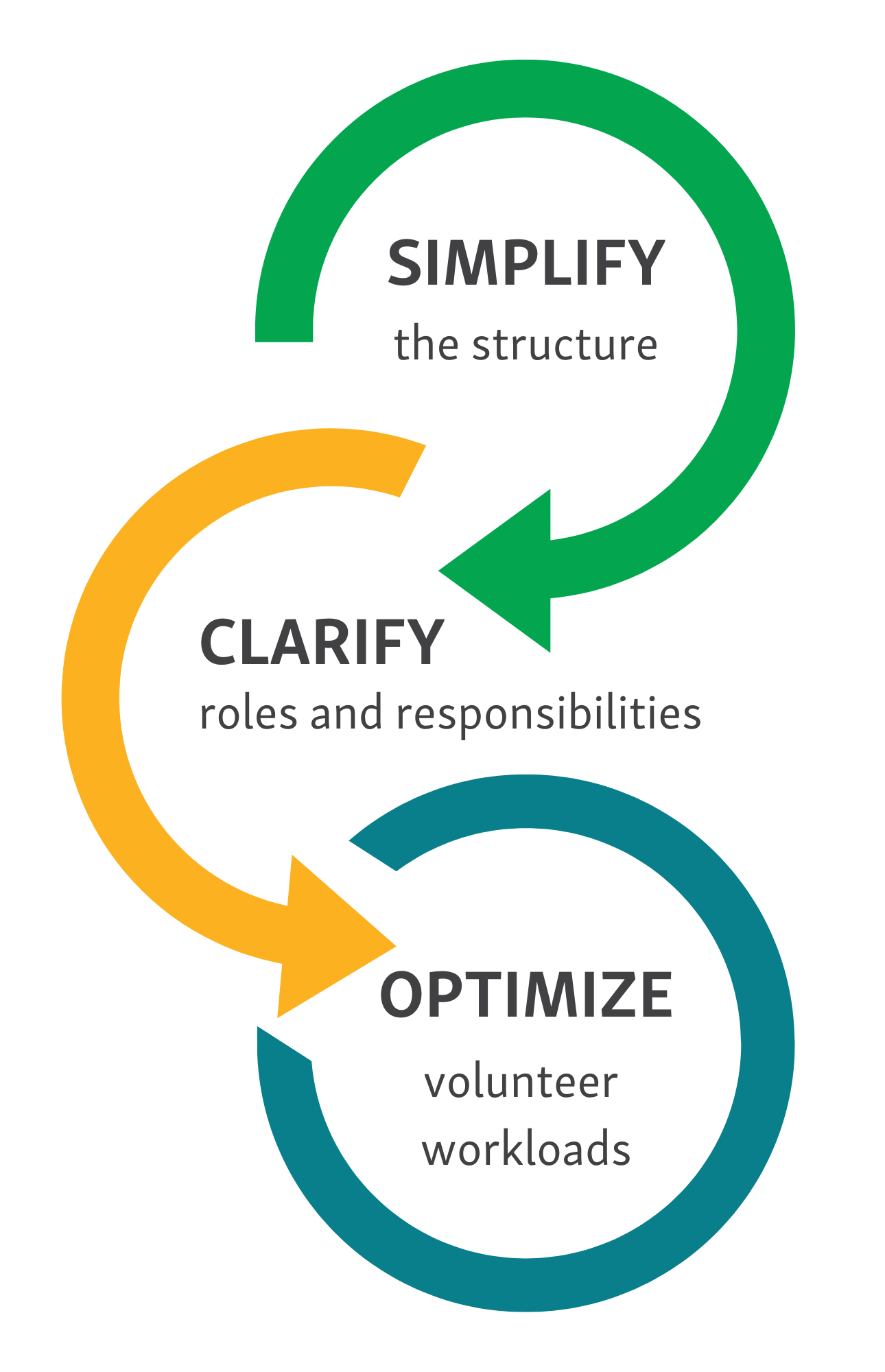2025-2027 Restructure
Implementation of the 2025-2027 Restructure Plan will happen in stages. This page will continuously be updated as the restructure is implemented.
Adapting Form to Function

Membership Is Growing
More members.
More SIGs.
More abstracts and conference attendees.
More activity!

Growth = Opportunity
ISOQOL listened through surveys, volunteer feedback, and interviews.
We identified a need to adapt structure to size.
Council Structure: 2016
695 Members
Council Structure: 2024
1100 Members
Liaison Structure: 2025

From Council to Liaison
ISOQOL is moving from a council structure to a liaison structure. In a liaison structure, board members serve as active members in volunteer groups and represent the interests of their assigned volunteer group in Board Meetings.
Moving to a liaison structure will require modifications to committee structures, as well as to the governance of Special Interest Groups.
Goals
Simplify the Structure
Simplify the structure, improving the Board’s ability to represent member interests by:
- Dedicating 1 board member exclusively to each volunteer body as a board liaison
- Modifying procedures to streamline proposal processes, reducing feedback and approval wait times
Clarify Roles and Responsibilities
Clarify roles and responsibilities to provide volunteers with more support and resources by:
- Standardizing role descriptions
- Defining relationships between board liaisons, staff liaisons, and co-chairs
- Standardizing orientation processes for every level of volunteering
Optimize Volunteer Workloads
Optimize volunteer workloads to improve volunteer experiences by:
- Modifying volunteer sign-up procedures for better volunteer-program matching (complete the new volunteer sign-up survey here!)
- Restructuring each volunteer program to have varying commitment levels, building to high commitment leadership positions
- Developing recommended volunteer pathways leading to high commitment level leadership positions such as SIG leadership, committee leadership, journal leadership, Board leadership, etc.
- Providing members with pathway recommendations based on personal/career goals
- Investing in early career development programs
Changes to Committees
In order to optimize volunteer workloads, committees will be modified to include more subcommittees.
Exceptions to these structural changes include event-related committees/subcommittees, journal editorial boards, and task forces.
The Committee Leadership Team
Each committee will be modified to have 2 co-chairs and 1 board liaison, each serving a 3-year term. The committee is responsible for strategic oversight over each subcommittee.
Additionally, each committee will have an assigned staff liaison.
Subcommittees
Over the next two years, each committee will undergo an expansion process to identify and build support for additional subcommittees.
Changes to SIG Program
To modify the governance structure of the Special Interest Group Program, two task forces have been established: the Regional Interest Group (RIG) Task Force and a SIG Task Force.
Call for Volunteers
The SIG task force is spearheaded by 3 members who participated in the Strategic Plan development process and the work of the task force will be divided amongst multiple working groups. We are currently calling for volunteers to join the working groups under the Special Interest Group Task force.

The International Society for Quality of Life Research (ISOQOL) is a global community of researchers, clinicians, health care professionals, industry professionals, consultants, and patient research partners advancing health related quality of life research (HRQL).
Together, we are creating a future in which patient perspective is integral to health research, care and policy.



